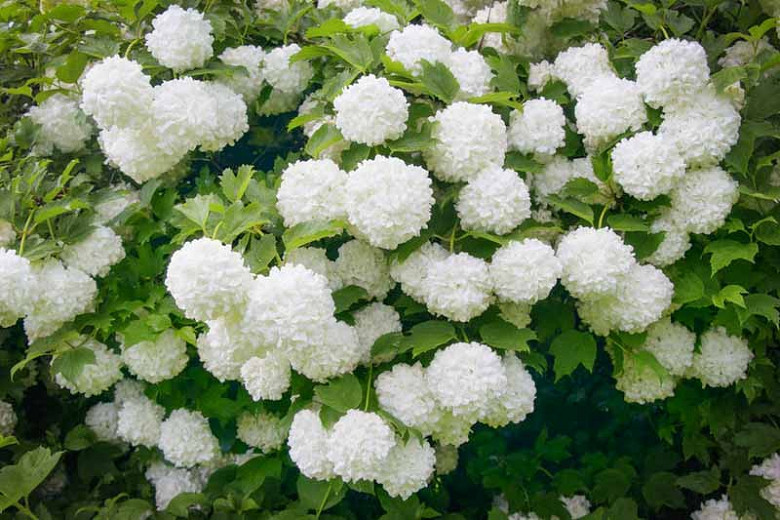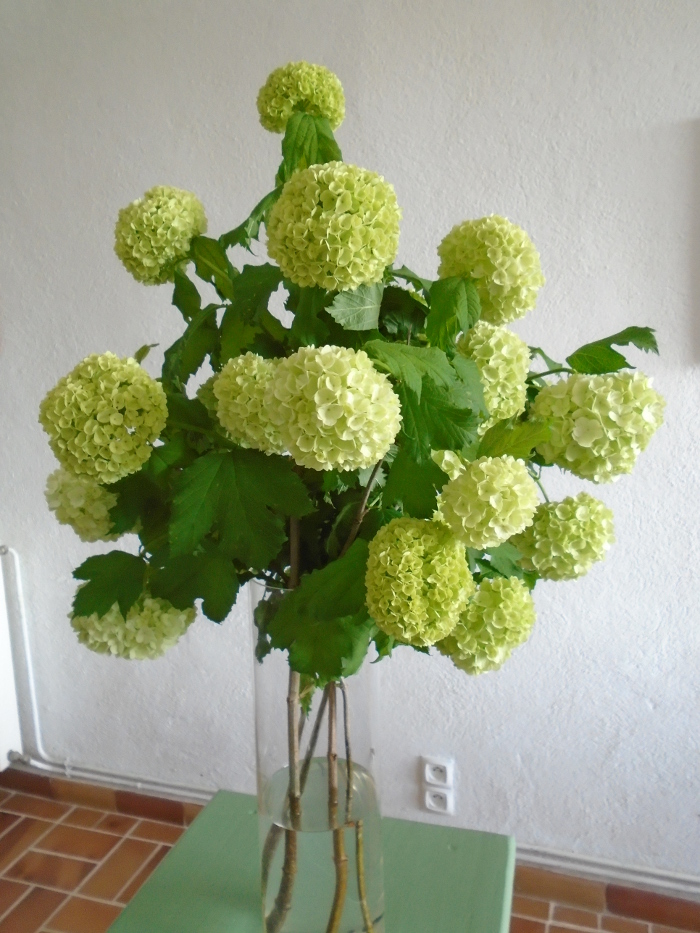Viburnum Opulus Roseum: The
Introduction
Viburnum opulus roseum, also known as the snowball bush, is a deciduous shrub that is native to Europe and Asia. It is a member of the Caprifoliaceae family and grows to be about 6 feet tall. The leaves are oval-shaped and have serrated edges. The flowers are white and are arranged in clusters. The fruit is a berry that is red or black.
Viburnum opulus roseum is a popular ornamental shrub that is used in gardens and landscaping. It is also a good source of nectar for bees and butterflies.
Main Content
- History and Cultivation
Viburnum opulus roseum has been cultivated for centuries. It was first mentioned in a book by the Roman author Pliny the Elder in the first century AD. The shrub was introduced to North America in the early 1700s.
Viburnum opulus roseum is easy to cultivate. It prefers full sun or partial shade and moist, well-drained soil. The shrub is drought-tolerant once established.
- Features and Benefits
Viburnum opulus roseum is a beautiful and versatile shrub. It has a rounded, spreading habit and can be grown as a single specimen, in a shrub border, or as a hedge.
The shrub's most striking feature is its flowers. In the spring, the shrub produces large clusters of white flowers that resemble snowballs. The flowers are fragrant and attract bees and butterflies.
The shrub's leaves are also attractive. They are maple-like in shape and have serrated edges. In the fall, the leaves turn shades of orange and red.
Viburnum opulus roseum is a relatively low-maintenance shrub. It does not require much pruning, but it may need to be watered during dry periods.
- Health Benefits
The berries of Viburnum opulus roseum have some health benefits. They are a good source of vitamin C and antioxidants. The berries have also been used traditionally to treat menstrual cramps and other health problems.
Conclusion
Viburnum opulus roseum is a beautiful and versatile shrub that is easy to cultivate. It is a great addition to any garden.
Viburnum opulus roseum, also known as the snowball bush, is a beautiful and easy-to-grow shrub that is perfect for any garden. It produces large, white flowers in the spring that are sure to add a touch of beauty to your landscape. The snowball bush is also a great choice for cut flowers, and its leaves turn a beautiful shade of orange and red in the fall.
To learn more about viburnum opulus roseum, please visit Home Gardening. This website has a wealth of information about the plant, including its care requirements, planting instructions, and pest and disease information.
FAQ of viburnum opulus roseum
- What is Viburnum opulus roseum?
Viburnum opulus roseum, also known as the snowball bush, is a deciduous shrub that is native to Europe and Asia. It is a popular ornamental plant, known for its large, white flowers that bloom in the spring.
- What are the benefits of planting Viburnum opulus roseum?
There are many benefits to planting Viburnum opulus roseum. It is a low-maintenance plant that is drought-tolerant and deer-resistant. It is also a good choice for attracting pollinators, such as bees and butterflies.
- How do I care for Viburnum opulus roseum?
Viburnum opulus roseum is a relatively easy plant to care for. It prefers full sun to partial shade and moist, well-drained soil. It should be watered regularly during the growing season, but it is important to avoid overwatering.
- How do I propagate Viburnum opulus roseum?
Viburnum opulus roseum can be propagated from cuttings or seeds. Cuttings are the most common method. To propagate from cuttings, take a 6- to 8-inch cutting from a healthy plant in the spring or summer. Remove the bottom leaves from the cutting and dip the cut end in rooting hormone. Plant the cutting in a well-draining potting mix and keep the soil moist. The cutting should root in 4 to 6 weeks.
- What are some common problems with Viburnum opulus roseum?
Some common problems with Viburnum opulus roseum include:
* Leaf spot: This is a fungal disease that can cause brown or black spots on the leaves.
* Powdery mildew: This is a fungal disease that can cause a white powdery coating on the leaves.
* Aphids: These small insects can suck the sap from the leaves, causing them to wilt and curl.
* Scale insects: These small insects can attach themselves to the stems and leaves of the plant, sucking the sap.
- How do I treat common problems with Viburnum opulus roseum?
Common problems with Viburnum opulus roseum can be treated with:
* Fungicides: These can be used to control leaf spot and powdery mildew.
* Insecticides: These can be used to control aphids and scale insects.
Image of viburnum opulus roseum
- Image 1: A close-up of a single Viburnum opulus roseum flower. The flower is a large, round pompom of sterile white petals.

- Image 2: A full-size image of a Viburnum opulus roseum shrub in bloom. The shrub is covered in large, round pompoms of sterile white petals.

- Image 3: A close-up of the leaves of a Viburnum opulus roseum shrub. The leaves are oval-shaped and have a serrated edge.

- Image 4: A view of a Viburnum opulus roseum shrub in the fall. The leaves have turned shades of purple and red.

- Image 5: A group of Viburnum opulus roseum shrubs planted together in a garden.

- Image 6: A close-up of the berries of a Viburnum opulus roseum shrub. The berries are small and red.
- Image 7: A bird eating the berries of a Viburnum opulus roseum shrub.

- Image 8: A Viburnum opulus roseum shrub in a vase. The flowers are a beautiful addition to any home décor.

- Image 9: A painting of a Viburnum opulus roseum shrub. The painting captures the beauty of the shrub in bloom.

- Image 10: A photograph of a Viburnum opulus roseum shrub taken by a professional photographer. The photograph captures the beauty of the shrub in all its glory.


Post a Comment for "Viburnum Opulus Roseum: The"